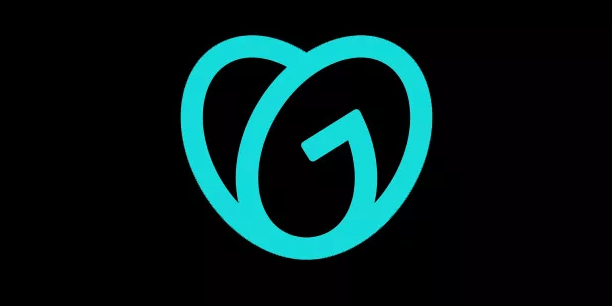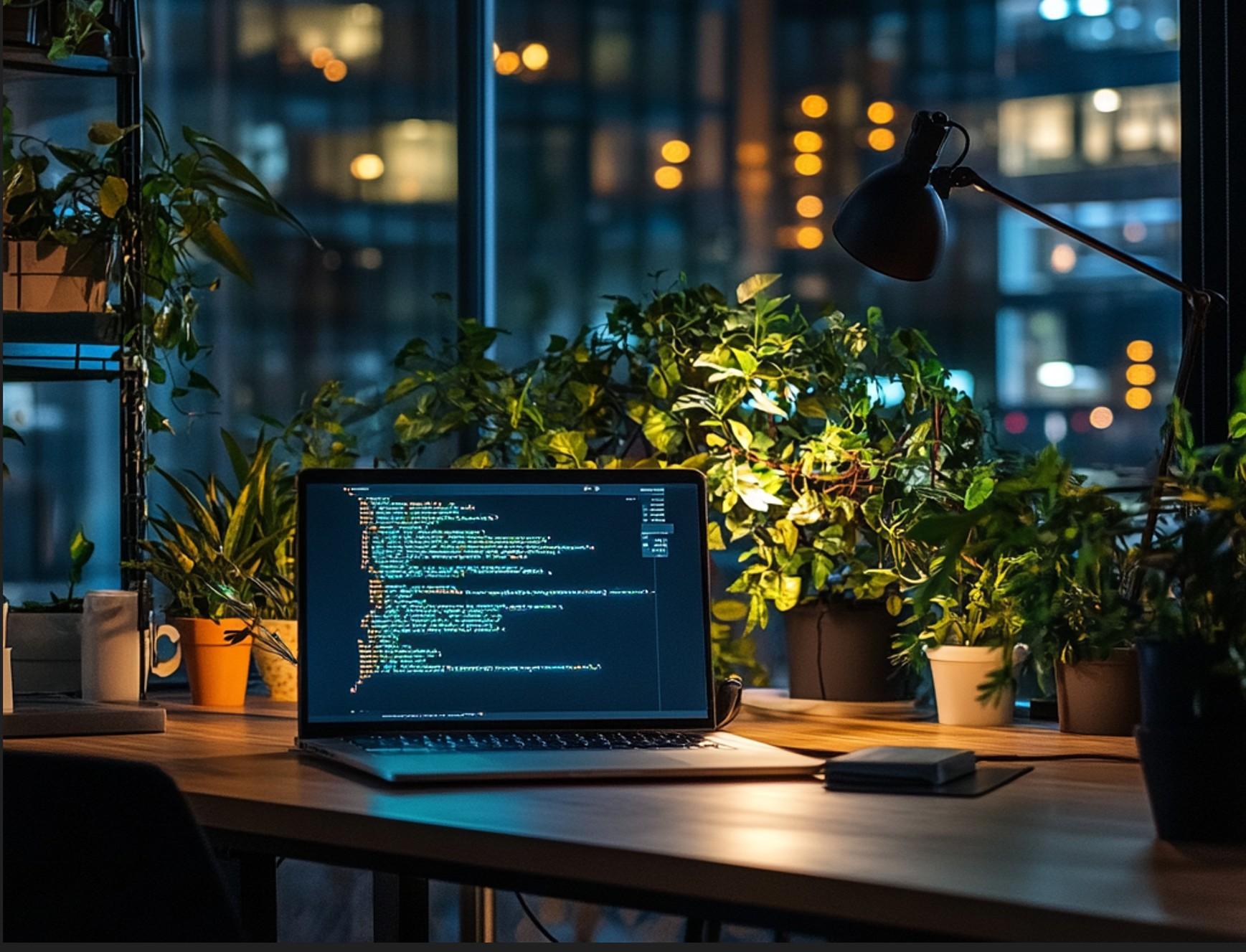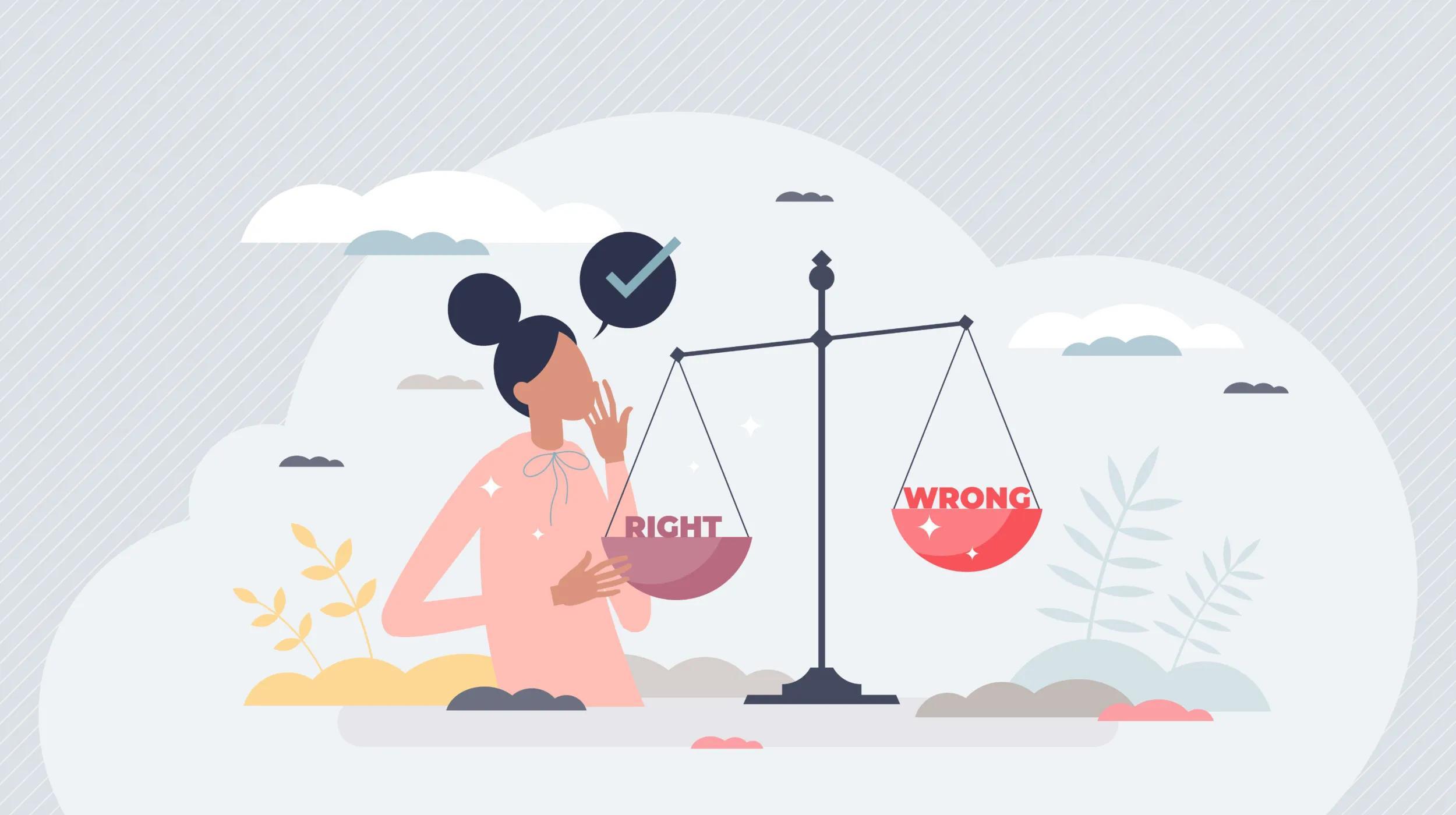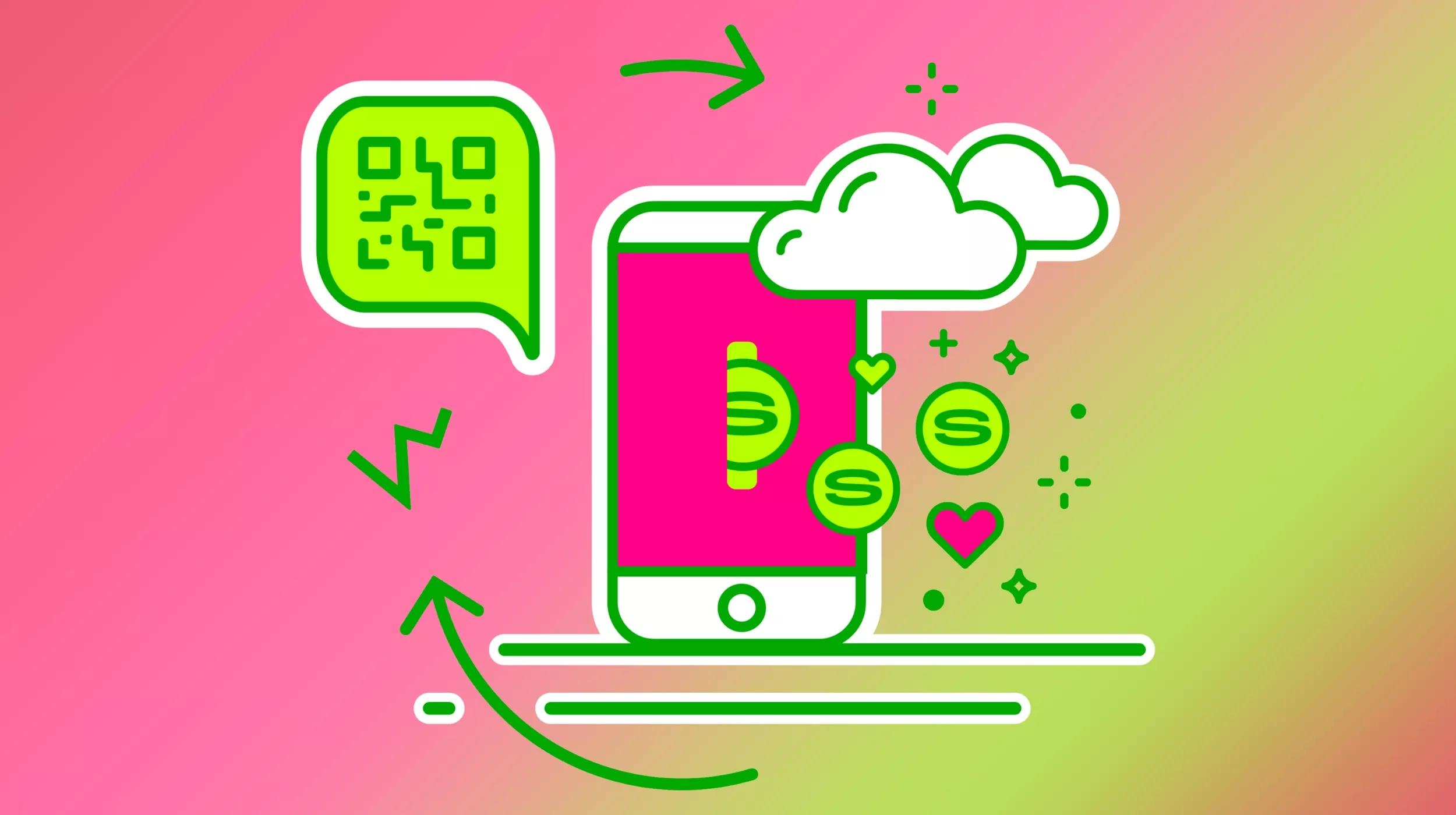In the dynamic world of website design, embracing trends without sacrificing your brand’s unique identity is essential — and challenging. This guide draws on insights from leading industry experts, including CEOs and founders, who understand the importance of aligning trends with brand consistency.
How to apply trends to your website without losing your brand identity
Check out these expert tips on how to integrate trends with your brand authentically and successfully.
Be selective to stay consistent
The key is to be selective in order to stay consistent.
I've worked with hundreds of brands through my agency, and most of the time they come to us asking to follow a new design trend and apply it to their brand. In many cases, that makes sense, but often it doesn't.
For example, we had a law firm that wanted us to use a lot of parallax and animation, and they were referencing a very exciting VFX website. We explained that while all that would look striking, it could take away from what they stand for. It wouldn't feel on-brand.
Instead of making a fully animated website, we ended up using some animation to highlight their case studies—this helped draw attention to what's most important for them without taking too much away from the overall brand identity.
The key to effective web design is to consider your audience and how they may respond to what you're presenting. In this case, doing too much could have the opposite effect since it could end up being distracting.
On the flipside, we had another client that was an investment company—they wanted to use illustrations and animated characters to tell their story. At first sight, that may seem odd for an investment company, but their whole brand was about being playful, and so it made sense.
There are a ton of very cool design trends, and they change all the time, but you should always take a step back and think about your brand identity and whether a trend would make sense specifically for you and your audience.
Rafael Romis, CEO, Weberous Web Design
Experiment with mock-ups first
Website design trends shift often as brands strive to create a unique identity and lasting impression.
I like to experiment with mock-ups on Figma before implementing any changes on the site. This allows me to ensure the design aligns with our brand ethos.
For example, we moved from using sliders in the hero section to emphasizing key messaging through typography. While sliders were visually dynamic, they often slowed down loading times and diluted the brand's core message. By adopting a text-focused approach, we can quickly convey our value proposition, and the site loads faster, improving user experience.
Although this shift may seem significant, it actually stays true to our brand's essence by maintaining a clear and direct communication style.
My advice is to embrace trends that enhance user experience, but ensure they are adapted in a way that reinforces your brand's core values. Use tools like Figma to visualize these changes before making them live.
Nirmal Gyanwali, Founder and CMO, WP Creative
Focus on end-user value
As an SEO strategist, balancing design trends with brand identity is something I help my clients navigate—and it's a challenge I've worked through on my own site. There's often a temptation to adopt the latest design features we admire on competitors' sites.
One of the ways I curb this desire is by focusing on the end-user. I always ask, "Will this change add true value or benefit my ideal visitor?" If the answer isn't a confident yes, the trend isn't worth pursuing.
For instance, a popular trend in fashion websites right now is the use of highly immersive video headers and background animations to create a dynamic, editorial feel—something. While I love how these elements look, they didn't align with our core mission of "doing more with less."
Video-heavy designs often slow down site performance, and I felt this would detract from the seamless experience I want my readers to have. Since my audience is looking for concise, actionable content to curate their wardrobes, introducing heavy video features felt unnecessary.
Instead, I focus on static visuals paired with well-organized, modular sections. The layout highlights capsule wardrobe collections and guides in a way that allows visitors to quickly find relevant content without distractions. This decision not only supports faster load times but also reinforces the minimalist, practical philosophy of my brand.
By keeping the design clean and focusing on usability, I ensured the site stayed modern without compromising its identity. This is a strategy I always recommend to clients: adopt trends thoughtfully, but ensure every design decision aligns with your brand's core message. Just because something looks great elsewhere doesn't mean it's right for your brand.
Celeste Routh, SEO Strategist, The Elegance Edit
Prioritize simplicity and clarity
We navigate current trends in website design by staying true to our core purpose: showcasing the stories behind the projects. While it's important to stay modern and visually appealing, we prioritize simplicity, clarity, and the narrative over flashy web features or trends that could detract from the experience.
A specific example of adapting to a trend without compromising our brand's identity is the growing emphasis on interactive elements and animations. Rather than fully embracing these features—which can clutter the user experience—we opted for subtle transitions and clean layouts that draw attention to the content, not the website itself. This allows the focus to remain on the stories we're telling, reflecting our values of authenticity and connection to the work, while still ensuring the site feels contemporary and engaging.
By stripping away distractions and maintaining an uncluttered design, we give visitors an immersive, thoughtful experience that aligns with our mission of highlighting the people and ideas behind each project. This approach ensures our brand identity stays intact while evolving with design trends in a balanced, thoughtful way.
Andrew Chung, Founder, Prefab Projects
Refine and innovate dark mode
Navigating web design trends while maintaining brand identity is a constant balancing act in our field. For us, it's about carefully selecting trends that align with and enhance our existing brand values, rather than jumping on every bandwagon.
A great example of this was when we decided to refresh our website's dark mode design. We've always been ahead of the curve with our dark-mode interface—it's been a core part of our brand identity from day one. But, as dark mode became more mainstream, we wanted to ensure our site still stood out and reflected current design sensibilities.
The challenge was to evolve our dark-mode design without losing the unique identity we'd built around it. We didn't want to simply follow the crowd; we needed to innovate within our established aesthetic.
We started by refining our color palette. We introduced more nuanced shades of gray and deep blues to create a richer, more layered dark background. This allowed us to play with depth and hierarchy in new ways, guiding users' attention more effectively through our content.
We also experimented with subtle, animated gradients for interactive elements. This added a dynamic feel to the site without compromising the sleek, professional look our clients expect. It was a nod to the trend of more dynamic web experiences but executed in a way that felt true to our brand.
Typography was another area where we saw room for improvement. We switched to a more modern font for body text, while keeping our distinctive brand font for headings. This improved readability while maintaining our visual identity.
Throughout the process, we constantly referred back to our brand values of innovation, clarity, and user-centricity. Every design decision was weighed against these principles.
The result was a website that felt fresh and current but still unmistakably ours. We maintained the dark mode our clients know and love but elevated it to new heights. The feedback has been overwhelmingly positive—clients have noted that the site feels more intuitive and engaging, while still being recognizably on-brand.
This experience reinforced for us that staying true to your brand doesn't mean remaining static. It's about evolving thoughtfully, always with your core identity and values as your guide.
Zachary Bernard, Founder, We Feature You PR
Use subtle enhancements
Following trends without losing brand identity is all about subtle enhancements. For an education platform, we worked on, we added an underline slide-in effect to the call-to-action buttons. When users hovered over a CTA, a line smoothly slid in beneath the text, signaling interactivity in a polished, understated way.
This animation was subtle enough to feel modern without being distracting, reinforcing the platform's professional and approachable tone. It created a sense of movement, encouraging engagement while maintaining the clean design aesthetic. Thoughtful details like this show how trends can enhance the user experience without compromising the brand's unique voice.
Zavier Dinwiddie, Director of Marketing Operations, LeaseMyMarketing
Embrace bold typography
We've tended to embrace the trend of bold, oversized typography as a way to modernize our look. We'll also use that for clients if it helps to reinforce their brand identity. We typically use it strategically for key headlines and callouts, drawing attention to our core messages and value propositions.
This approach allows us to create visually striking pages that immediately communicate our focus on impactful messaging. However, we've been careful to maintain clean, professional font styles for body text. This balance ensures our content remains highly readable and maintains the polished, professional look our brand is known for.
We applied a similar strategy when updating the website for a high-end realty client. They wanted to modernize their online presence without losing their classic, high-end feel. By incorporating bold typography for property titles and key features, we added a contemporary touch that still felt sophisticated. We paired this with their traditional serif font for descriptions, maintaining the sense of elegance and expertise their brand is built on.
This selective use of trending design elements has allowed us to keep our own site and our clients' sites feeling current and engaging, without sacrificing the core brand identities that set us apart in our respective markets.
Elliott Kosmicki, Founder and President, Major Impact
Adapt trends to core values
It's important to keep your brand's identity and foundation in mind when choosing which web-design trends to implement. There's always going to be a wide variety of trends to tap into—it's all about selecting the right trend for your brand. Focus on adapting trends that align with your core values, strengthen your messaging, and add value to your audience.
AI-generated content and images are everywhere right now. Depending on your unique identity, values, and audience, moving in this direction with your web design could be beneficial or detrimental to your branding.
AI-generated images could help an innovative tech startup illustrate complex ideas and software functions, making it easier to communicate value to their potential clients. A tech-savvy audience values efficiency and being ahead of the curve, so they're probably already tapped into the advancements of AI. Generating product descriptions, technical white papers, and marketing materials with the help of AI could keep their offerings consistent and adapt their complex language to different target audiences.
On the other hand, a nonprofit benefits from creating authentic, emotional connections with potential donors and supporters. AI content could lack the depth and transparency of genuine human connection, leading to a disconnect with their audience. Their audience is attracted to heartfelt storytelling that resonates with them on a personal level, making a more authentic approach to their website a better fit for their branding.
When navigating branding and web-design trends, the key is to ensure that any trend you adopt adds value to your branding rather than extracting value from it.
Katie Montgomery, Brand and Web Designer, Katie Mont
Analyze trends for user experience
Our approach is to view design trends through the lens of our core identity: data-driven empathy. We don't simply jump on every new trend; instead, we analyze how each trend can potentially enhance user experience and engagement, always keeping our brand values at the forefront.
A specific example that comes to mind is our recent adoption of AI-powered chatbots. While chatbots have become increasingly popular in web design, we were initially hesitant. Our brand is built on genuine human connection and empathy, and we were concerned that a chatbot might feel impersonal or detract from that core value.
However, we saw an opportunity to adapt this trend in a way that actually reinforced our brand identity. We developed a custom AI chatbot that we integrated into our website, but with a twist. Instead of trying to pass it off as human, we were transparent about its AI nature. We programmed it to embody our brand voice—analytical yet approachable—and to emphasize that it was a tool to connect users more efficiently with our human team.
We gave the chatbot a backstory that aligned with our company values. It introduces itself as an AI assistant developed by us to help guide users to the right human expert for their needs. We also incorporated our data-driven approach by having the chatbot offer users the option to see relevant statistics or case studies during their interactions.
This adaptation allowed us to stay current with the chatbot trend while reinforcing our commitment to transparency, human connection, and data-driven solutions. The result has been overwhelmingly positive: we've seen increased engagement on our website and more efficient routing of inquiries to the right team members.
This example embodies our philosophy: we don't shy away from trends, but we always filter them through our brand identity. We ask ourselves, "How can we use this trend to better serve our users and reinforce who we are as a company?" This approach allows us to stay current without compromising our unique identity and values.
Daniel Lynch, Digital Agency Owner, Empathy First Media | Digital Marketing and PR
Balance fresh design elements
As the owner of a web design company, preserving brand identity is crucial to the survival of my company and that of our clients. In an industry where trends evolve quickly, we emphasize a balanced approach—integrating fresh design elements while staying true to each client's unique essence.
One example is our work on Amazed Home Care. With healthcare websites trending toward minimalist, trust-building designs, we adopted a streamlined look to meet user expectations. However, we ensured the design stayed true to Amazed Home Care's values by using calming colors, clean layouts, and strategic call-to-action buttons that reflect their warm, patient-centered approach. The website feels modern and accessible while embodying the care and compassion central to the brand.
Miguel Cairo, CEO, Unique Web Designer
Prioritize authenticity over flashy trends
When it comes to navigating trends in web design, I always prioritize authenticity and long-term strategy over flashy trends. Trends come and go, but a brand's identity needs to be consistent and recognizable, so I focus on integrating trends that enhance—not overshadow—the brand.
One example is when minimalism became a huge trend in web design. While I appreciate clean and simple layouts, my brand is all about being approachable and supportive. Going ultra-minimal felt too cold and distant for my audience, so instead of stripping down the site to bare-bones, I adapted the trend by cleaning up any "extra" elements while still keeping warm, inviting visuals and conversational copy. I incorporated minimalist principles like ample white space and clearer navigation without losing the sense of connection and personality that's central to my brand.
This balance allowed me to stay relevant with a fresh, modern look while still being true to what my audience expects from me—approachability, warmth, and value-driven content.
Jessica Freeman, Founder and Web Designer, Jess Creatives
Customize trends for brand identity
It's important to understand that while you can be inspired by how other websites implement design trends, that doesn't mean their approach is the only way—or even the best way—to do it for your business.
For instance, I worked with a nonprofit client who was drawn to the emerging trend of custom illustrations. However, because this trend often leans toward playful, whimsical designs, the way most websites approached it didn't align with their brand identity. So, instead of using bright, cartoonish imagery, we chose simple, clean-line illustrations with muted colors that reflected the organization's focus on serious social issues.
Ultimately, this allowed us to embrace the custom-illustration trend while staying true to the nonprofit's values and identity.
Michaela Ruiz, Web Designer, Higo Creative
Enhance unique identity strategically
Balancing creativity with consistency can be tricky, especially in the ever-evolving landscape of web design. We're not about following trends blindly; instead, we focus on enhancing a brand's unique identity with thoughtful, strategic updates.
For example, we recently worked with a client in the tech sector who was looking to refresh their website but didn't want to lose the professional, clean look they'd built over time. One trend that caught our eye was the use of subtle animations triggered to improve user experience. Rather than go overboard, we incorporated minimalist animations—such as soft transitions between sections and interactive hover effects—that helped users navigate the site smoothly. These small touches didn't just look good; they increased engagement and kept visitors on the site longer. In the first month after the redesign, bounce rates dropped by 16%, and users spent more time exploring key pages.
For us, it's about maintaining the core elements that define the brand—like the tone, color palette, and overall aesthetic—while introducing trends that feel purposeful. We ensure that any new design elements serve the brand's goals, not just its desire to feel "current."
James Hill, CEO, Golden Goose Digital
Know trends to use them
For me, it is all about embracing trends in the first place. As a designer, it is your job to be on top of what is going on in the web design world. You must be researching outside of your client work so you have a bank of examples that could be applied to a client in any industry. This does not mean that you just rely on following or copying trends for your clients, but you have to be aware of them in the first place if your designs are going to benefit from them at all.
The next thing is to know how to use them. From filtering out what seems too trendy to you and doesn't align with your design style, to using what you do like in a clever way that doesn't overshadow the longevity of the brand you've designed.
How I approach this is to make sure that the brand identity I design is strong enough to stand on its own without excessive use of brand-design trends. The last thing you want is a trendy brand combined with a trendy website design, with no real unique personality.
Once the brand is strong, I allow myself to choose one web design trend that I believe will reinforce the principles that have already been highlighted in the brand. Working in this way means my work won't get overwhelmed by trends for the sake of it, but will use them to my client's advantage.
An example of when I used this approach is the work I did for Pipedream Productions. They are a film production company that tells authentic, bold stories with a lot of heart. The brand I designed for them reflects the vibrancy and imagination of the work they do. This was achieved by using bold sans-serif typography, luminous colors, and contemporary, eye-catching logo and layout design.
The one trend I used to reinforce the principles of the brand was interactive typography. In the footer of the website, the title of the business moves across the screen in a seamless scroller effect. I first of all make sure this style of the typography is on brand, which it is. The interactive typography comes in when the user hovers their cursor over the words. They then change color and the letters expand according to where you move your cursor. It's a fun and unexpected element of the site. Most important of all, it reinforces the brand principles of boldness and creativity.
Overall, it's important to know web design trends to use them to your advantage. Create a strong enough brand first and use one web design trend to strengthen this brand and make it more memorable.
Amy McMahon, Branding and Web Designer, Amy Mc Design
Reinforce brand with authentic photography
As the founder of a web-design company, I firmly believe that the colors, fonts, and overall personality of the brand must remain intact even as design trends evolve. One specific trend I've encountered recently is the use of AI-generated images, which many companies are adopting to streamline visual content.
For a client in the therapy sector, we chose to bypass this trend because we felt it was crucial to present a realistic and relatable point of view that resonated with their audience. Instead of using AI images, we opted for authentic photography that showcased real people.
This approach not only aligned with current design trends of minimalism and clean aesthetics, but also reinforced the client's brand identity by emphasizing authenticity and connection. The outcome was a visually appealing website that enhanced user engagement and trust while remaining true to the brand's values and personality.
Nicole McCullum, Founder, Captivate Designs, Inc.
Blend modern aesthetics with core values
We navigate current trends in website design by prioritizing user engagement, SEO, and conversion optimization while ensuring that our brand identity remains strong. For example, we recently integrated a minimalist design trend focusing on clean layouts and simplified navigation. While this trend encourages fewer elements on a page, we adapted it to fit our brand by strategically placing high-quality content and clear calls to action to engage users effectively. This approach helped us maintain our commitment to maximizing conversions and SEO, while maintaining our unique focus on informative, user-friendly design.
By doing this, we managed to blend modern design aesthetics with our brand's core values, ensuring that while the look of our website evolved with current trends, it still stayed true to our mission of delivering excellent user experience and high search engine rankings.
Rich Stivala, CEO and Web Design Strategist, worldwideRICHES Web Design and SEO
Iterate trends with user feedback
I believe navigating current website design trends requires a careful blend of experimentation and adherence to brand identity. We actively incorporate user feedback into our design process to test new ideas while keeping our core values front and center. For instance, we recently explored the trend of minimalist design to enhance user experience.
Before fully implementing this change, we conducted A/B testing on different landing page layouts, comparing the minimalist approach with our original design. The data revealed that users appreciated the cleaner look but still valued some of our signature elements, like our vibrant color palette and unique typography.
So, instead of a complete overhaul, we retained our brand's distinctiveness while simplifying navigation and content presentation. This iterative approach allowed us to evolve with design trends while ensuring that our brand's identity remained strong and recognizable. By embracing this method, we continuously refine our website, enhancing user engagement without losing what makes Neptune.ai unique.
Ani Ghazaryan, Head of Content Marketing, Neptune.AI
Ensure trends fit brand and industry
One of the main reasons that you should be cautious about incorporating current trends into your website design is that it may not work best for the situation at hand. Make sure that any design decision works for the brand, both visually and conceptually.
As you consider whether or not a design trend will work for a website, think about the flexibility of the brand. Some brands are very rigid, while others are much more fluid. Would your brand still be recognizable through this trend? Is this trend true to your brand voice and values?
Your industry can also help answer this question. Some industries, such as startups, food and beverage, and cosmetics, are much more open to fun and creative visuals. Others, such as financial institutions, insurance companies, and lawyers, have stricter expectations for visuals and prioritize professionalism over creativity.
One example from my own work of using a web design trend effectively is the use of parallax images on Mosaic Property Valuations’ site. Mosaic is a commercial property-appraisal company that wanted to include attractive photography of places they have appraised (or places like them) on their website. Parallax images allowed us to highlight those photos that users might otherwise have scrolled past while also showing a little more of these photos in some areas since users can scroll to see more of the top and bottom. This doesn't feel overly trendy, which is what makes it a good fit, since the company's industry and individual brand are not meant to feel showy or excessive.
The use of handmade web elements for micro-interactions on Primarium’s website also strikes the right balance between a current trend and maintaining brand identity. You can see this when you hover over their navigation menu items, for example. These web design choices are a great fit for their brand. Hand-drawn elements are already part of their larger imagery, and discovery is central to their whole website experience. Hovering over the navigation menu provides just one instance of fun discovery on the site, and once you've seen the illustrations on one menu item, it encourages you to go through the rest to experience them all.
Claire Escobedo, Design Director, Online Optimism
Disclaimer: Opinions belong to the author alone and do not necessarily represent the views of GoDaddy. All trademark rights belong to their respective owners. Third-party trademarks are used here for demonstrative and educational purposes only; use does not represent affiliation or endorsement.






